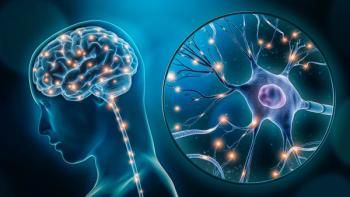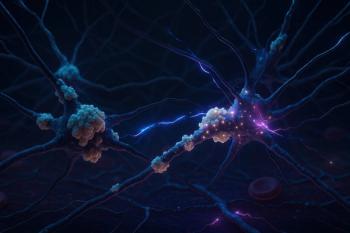
Exploring NMDA Antagonists for MDD
Key Takeaways
- NMDA receptor antagonists provide rapid relief for treatment-resistant depression and suicidal ideation, acting as circuit breakers to restore brain function.
- AXS-05, combining dextromethorphan and bupropion, is effective for major depressive disorder, with rapid onset and good tolerability.
Yvette Elpidio, PMHNP-BC, shares insights on NMDA agonists at the Southern California Psychiatry conference.
CONFERENCE REPORTER
N-methyl D-aspartate (NMDA) receptor antagonists are an exciting class of medications, Yvette Elpidio, MSN, APRN, FNP-C, PMHNP-BC, told attendees of the Southern Psychiatry Conference in Huntington Beach, California. The benefits of these agents can be seen within hours to days of administration, which is ideal for patients with treatment-resistant depression and suicidal ideation, she added.1
“NMDA antagonists act like a circuit breakers—resetting and restoring brain function” said Elpidio, who is a family nurse practitioner at Pacific Neuropsychiatric Specialists in Costa Mesa, California. It boosts brain-derived neurotrophic factor (BDNF) and synaptic growth, which allows for rapid symptom relief, she explained. She focused her discussion on AXS-05 (dextromethorphan-buproprion), ketamine, and esketamine. Currently, AXS-05 is approved for major depressive disorder while esketamine is approved for treatment resistant depression and major depressive disorder with suicidality. There is off-label IV use of ketamine, as it is not approved by the FDA.
AXS-05
“AXS-05 is well tolerated and ideal for patients open to a novel oral agent who may not yet meet the threshold for ketamine or esketamine,” Elpidio told attendees. She explained it is a
- ASCEND2, in which it demonstrated separation from bupropion and rapid effects across 6 weeks
- GEMINI, a phase 3 randomized, double-blind, placebo-conrolled trial in which it demonstrated a 16.6 reduction in the Montgomery-Asberg Depression Rating Scale (MADRS), compared with a 11.9 reduction for placebo
- COMET, in which it demonstrated good safety and tolerability as well as sustained results
Ketamine
Elpidio told attendees that
Esketamine
Esketamine is a real game changer, Elpidio said.
Esketamine has a rapid onset of effects, with effects evident in approximately 4 hours. It has demonstrated sustained effects with ongoing treatment, Elpidio added, and has demonstrated rapid MADRS improvement. The ASPIRE I and II trials demonstrated significant benefit in addressing suicidal ideation.
“This is our go-to for patients with intense suicidal thoughts—especially those resistant to conventional SSRIs,” she told attendees.
Concluding Thoughts
Elpidio encouraged attendees to better understand these agents so they can add them to their clinical toolbox as they can really make a positive impact on patient care. She shared stories from patients who thanked her and remarked even after the first treatment they felt better and felt more like themselves. The agents give patients and their clinicians an opportunity to celebrate successes. After hitting roadblocks and not seeing improvement, Elpidio told attendees these agents helped her feel like “I’m really doing my job.”
For more coverage of the Southern California Meeting, visit PsychiatricTimes.com.
References
1. Elpidio Y. Visualizing Novel Therapeutic Targets for Patients with Major Depressive Disorder. Presented at: Southern California Psychiatry Conference; July 11-12, 2025; Huntington Beach, CA.
2. Kuntz L. Positive Results for Dextromethorphan-Bupropion ASCEND Phase 2 Clinical Trial. Psychiatric Times. May 19, 2022. Accessed July 11, 2025.
3. Kuntz L. Esketamine CIII Nasal Spray: First and Only Monotherapy for Treatment-Resistant Depression. Psychiatric Times. January 21, 2025.
Newsletter
Receive trusted psychiatric news, expert analysis, and clinical insights — subscribe today to support your practice and your patients.

















